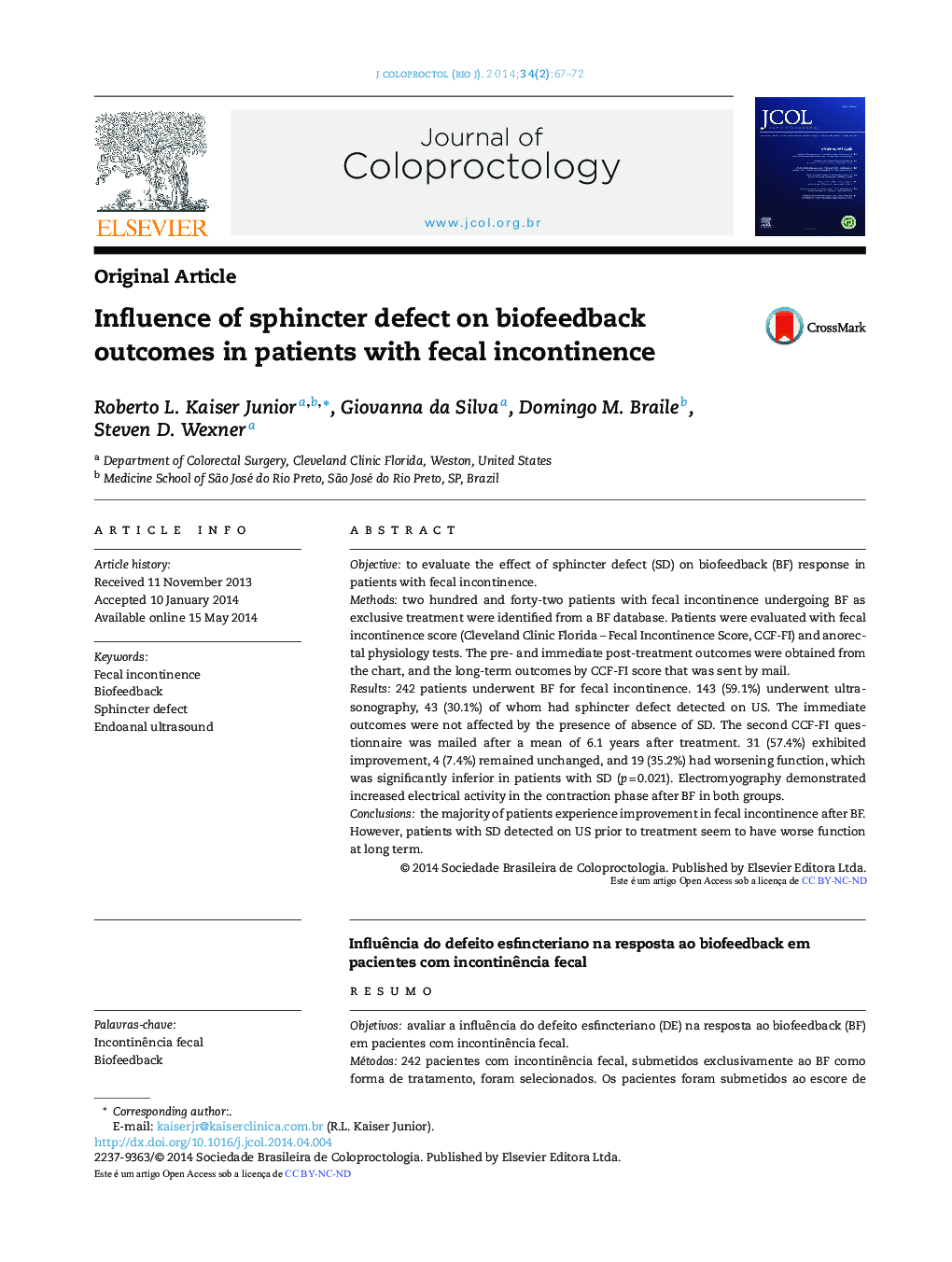| کد مقاله | کد نشریه | سال انتشار | مقاله انگلیسی | نسخه تمام متن |
|---|---|---|---|---|
| 4297002 | 1288236 | 2014 | 6 صفحه PDF | دانلود رایگان |
Objectiveto evaluate the effect of sphincter defect (SD) on biofeedback (BF) response in patients with fecal incontinence.Methodstwo hundred and forty-two patients with fecal incontinence undergoing BF as exclusive treatment were identified from a BF database. Patients were evaluated with fecal incontinence score (Cleveland Clinic Florida – Fecal Incontinence Score, CCF-FI) and anorectal physiology tests. The pre- and immediate post-treatment outcomes were obtained from the chart, and the long-term outcomes by CCF-FI score that was sent by mail.Results242 patients underwent BF for fecal incontinence. 143 (59.1%) underwent ultrasonography, 43 (30.1%) of whom had sphincter defect detected on US. The immediate outcomes were not affected by the presence of absence of SD. The second CCF-FI questionnaire was mailed after a mean of 6.1 years after treatment. 31 (57.4%) exhibited improvement, 4 (7.4%) remained unchanged, and 19 (35.2%) had worsening function, which was significantly inferior in patients with SD (p = 0.021). Electromyography demonstrated increased electrical activity in the contraction phase after BF in both groups.Conclusionsthe majority of patients experience improvement in fecal incontinence after BF. However, patients with SD detected on US prior to treatment seem to have worse function at long term.
ResumoObjetivosavaliar a influência do defeito esfincteriano (DE) na resposta ao biofeedback (BF) em pacientes com incontinência fecal.Métodos242 pacientes com incontinência fecal, submetidos exclusivamente ao BF como forma de tratamento, foram selecionados. Os pacientes foram submetidos ao escore de incontinência fecal (Cleveland Clinic Flórida-Escore de Incontinência Fecal, CCF-IF) e testes de investigação da fisiologia anorretal. O pré e pós-tratamento imediato foram obtidos do prontuário e para avaliação a longo prazo foi enviado o CCF-IF pelo correio.Resultados242 pacientes realizaram BF. 143 (59,1%) realizaram ultrassom e em 43 (30,1%) foi evidenciado DE. Os resultados imediatamente após o BF não foram afetados pela presença ou ausência de DE. O segundo questionário foi enviado pelo correio com tempo médio de 6,1 anos após término do BF. 31 (57,4%) melhoraram, 4 (7,4%) permaneceram inalterados e 19 (35,2%) pioraram, mas nos pacientes com DE a melhora foi significativamente inferior (p = 0,021). A eletromiografia demonstrou melhora na atividade elétrica na fase de contração em ambos os grupos.Conclusõeshouve melhora clínica na maioria dos pacientes com incontinência fecal após o BF. Entretanto, pacientes com DE detectados ao US antes do tratamento, apresentaram piores resultados a longo prazo.
Journal: Journal of Coloproctology - Volume 34, Issue 2, April–June 2014, Pages 67–72
